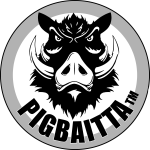PIGBAITTA 250
Requires Fewer Site Visits
The original PIGBAITTA model was designed to feed a large number of pigs, while requiring fewer site visits. Holding 250kg of feed, the PIGBAITTA can be left for longer without the need to re-fill. This way busy landholders can participate in projects with minimal disruption to their routines.
Feral pigs are also sensitive to any disturbances, so limiting visits not only reduces human scent and interference, but also keeps landholders and staff safer. This makes it easier for the feral pigs to accept the site as a safe source of food.
Quite often the ideal site to bait feral pigs is in a remote area that is difficult, and sometimes dangerous, to access. This is why the PIGBAITTA 250 has been designed to be transported via helicopter, enabling landholders to target feral pigs in remote areas that would otherwise be inaccessible.
The 250kg model also has an optional feature of built in sensors that monitor the grain volume and send that data via satellite, allowing you to regularly check the feed level from the comfort of your office.

A PIGBAITTA 250 with a grain volume sensor attached.
The Process:
Step One: Free Feeding
Once a suitable baiting location has been decided, the PIGBAITTA can be deployed with unbaited grain in an open configuration. The grain is freely and easily available, teaching the feral pigs that the location is a source of food. Using cameras, landholders can keep track of the animals coming and going from the area, until the feral pigs are comfortable eating and even sleeping in the area.
Step Two: Training Mode
The next step is to set the PIGBAITTA to a half-open or ‘training’ configuration. The still unbaited grain is visible and accessible, but the bar is lowered so that the feral pigs learn to lift it with their snout in order to access their meal. This stops livestock from accessing the grain, however thanks to their natural ‘rooting’ instincts the feral pigs figure it out quickly.
Step Three: Baiting
When the feral pigs have been sufficiently trained on how to lift the bar to access the feed, the PIGBAITTA can be ‘closed’ and baited grain can be implemented. The grain is now inaccessible to both stock and native fauna, so landholders can rest easy knowing no other animals will be at risk. However, the feral pigs know exactly what to do and can eagerly access their final meal.
